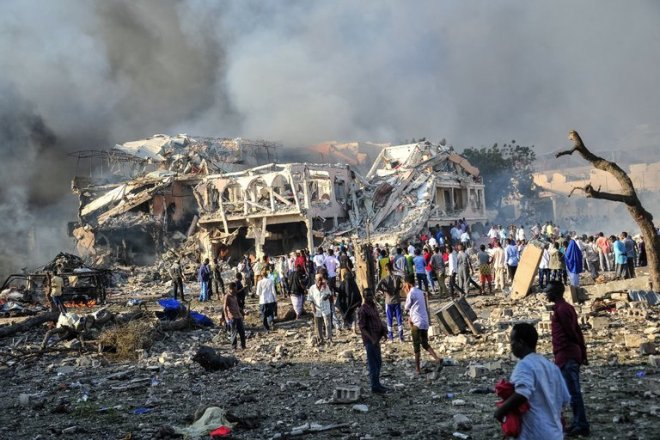
Safy Halan Farah
Thursday December 28, 2017
On a sunny day in 1991, Maryan, my dad’s first cousin, was hiding from rifle-carrying soldiers in a house in Mogadishu, Somalia, while the melodic voice of the singer Magool blared from a megaphone outside.
Magool repeated an ugly slur for the Darod, our family’s clan, while a sweaty Maryan crouched inside the kitchen, holding her breath.
When I was 10 years old, Maryan casually told me this story from the civil war in Somalia — then almost a decade in the past — over breakfast in my family’s home in Minneapolis.
I found it perplexing that Magool, an artist many Somalis held in high esteem, would allow herself to become a mouthpiece for violent men.
Before I was born, my college-educated, fairly Westernized parents decided they weren’t going to teach me about clans because that knowledge, in recent history, has been employed so murderously, especially in the rise of the Shabab militants. Growing up in Minnesota, in the Somali diaspora, I was relatively sheltered from that history. In 2017, however, it has been impossible to ignore the truth because of a particularly grim event: On Oct. 14, a truck bombing in Mogadishu killed more than 500 people and injured hundreds more.
As a child, I didn’t understand the extent to which clan ideology distorted many Somalis’ thinking. My own paternal grandmother, traumatized by the war, gave me my first introduction to that mind-set.
“Do you know the name of your clan, or what a clan is?” she asked me, in Somali, of course, when I was visiting at her home in Ohio during the summer between fifth and sixth grades.
I didn’t, I told her.
She took it upon herself to teach me not only about my own clan but also about the singer Magool’s clan, and her disdain for it. At the time, I cared more about cartoons than about politics or my identity as a Somali, but I didn’t judge my grandmother.
I know now, and to some extent I knew even back then, that my grandmother is a good woman who adopted a toxic ideology as a way to cope with pain. Relatives of Magool, who died in 2004, would tell you the same about her: the decades of cruelty and marginalization perpetrated by members of the Darod clan justified her hate. I see both my grandmother and Magool, and really all Somali women from that generation, as proxies in a conflict between men.
Shortly after Maryan recounted her story about hiding from soldiers, her daughter Awo, only a few years older than I, told me how she smuggled her family’s jewelry — the only wealth they could take with them as they fled Somalia — under her dress. In Somali with bits of English, she told it like a funny story.
“The men who were transporting us asked me why I had a lumpy stomach!” she said. “I told them I was extremely sick!”
In the summer of 2014, violent reality intruded again: My mother’s good friend, and a distant relative, the singer Saado Ali Warsame, was killed.
Last year, I spent some time compiling oral histories by Somali women for the history museum here in Minnesota, which has the largest Somali immigrant population in the United States. I was taken aback by the equanimity with which the women I interviewed spoke of the hardships they’ve endured since 1991. They calmly and clearly recalled the brutality that forced them to flee the country.
Ilhan Omar, now a member of the Minnesota House of Representatives, sat across from me on a couch in the lobby of my mom’s business and told me how soldiers kept trying to break into her childhood home in the middle of the night, until her family eventually fled Somalia. I remember thinking, as she spoke, that most people would collapse under the weight of this trauma, but there she was, wearing the same style of Somali skirt I wore, long and brightly colored, speaking easily about what she had experienced. She, like my grandmother, has continued to tell her story and rise above her circumstances.
I know that I’ve inherited more than violence and trauma: I’ve also inherited Somalia’s rich oral storytelling and poetry tradition, which is still a feminist legacy.
I’m sustained by the folk tales of the Somali heroine Arawelo and by new narratives being written by and about Somali women. This year was yet another reminder (as if we needed one) that the divisive remnants of clan identity and the pain of war are still present. It also reminded me that Somali women will heal us.